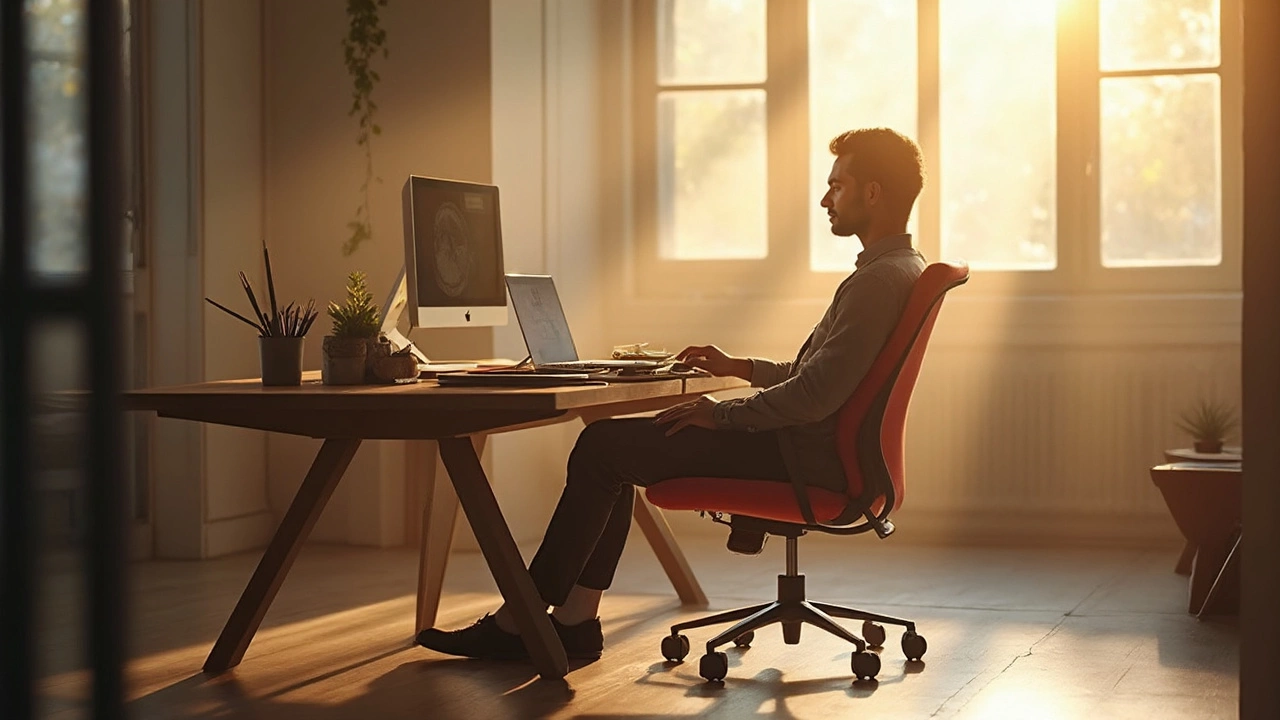Computer Furniture Guide: Pick the Right Desk, Chair & Setup for Your Home Office
If you’re gearing up for a home office, the first thing you need is furniture that works with your computer, not against it. A good desk and chair can boost productivity, protect your back, and keep your tech organized. Below are the basics you should consider before you click ‘add to cart’.
Picking the Right Computer Desk
Start by measuring the space where the desk will sit. Make sure there’s enough room for your monitor, keyboard, and any extra gear like speakers or a printer. A surface of at least 48 inches wide gives you room to spread out without feeling cramped.
Think about the desk height. The standard 28‑30 inches works for most people, but if you’re tall or short, an adjustable‑height desk can be a game‑changer. Sit with your elbows at a 90‑degree angle; your forearms should rest comfortably on the desk without raising your shoulders.Storage matters too. Drawers or a small shelf for cords and supplies keep the work area tidy. If you like a clean look, an open‑leg design hides cables underneath and makes the room feel larger.
Ergonomic Chairs and Accessories
A cheap chair will cost you in back pain later. Look for a chair with lumbar support, adjustable seat depth, and a swivel base. The seat height should let your feet rest flat on the floor, and your knees should be at or slightly below hip level.
Invest in a good mouse pad with wrist support if you spend hours scrolling. A monitor stand or riser lifts the screen to eye level, which reduces neck strain. Pair these with a simple cable management clip to keep cords from turning into a maze.
Don’t forget lighting. A desk lamp with adjustable brightness reduces eye fatigue, especially if your room doesn’t get much natural light. Position the lamp to the side of the monitor to avoid glare.
Finally, test everything before you settle. Sit in the chair, type on the keyboard, and glance at the monitor. If anything feels off, adjust or try a different model. The right setup feels natural; you shouldn’t have to think about it once you’re working.
With these simple checks, you can build a computer workspace that’s comfortable, efficient, and ready for long‑term use. No fancy jargon, just practical steps to keep you focused and pain‑free.
Best Chairs for Long Hours at Your Computer
Long hours in front of a computer demand a chair that supports both comfort and posture. Choosing the right office chair can make a huge difference in your daily productivity and long-term health. This article explores everything you need to know about finding the best chair for your computer workstation. Delve into design tips, ergonomic features, and what really matters when picking your perfect seat.





